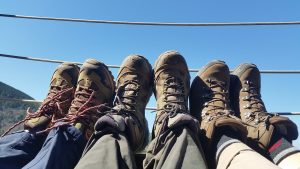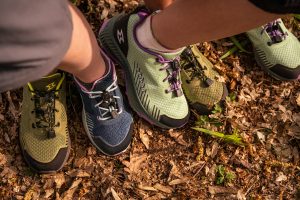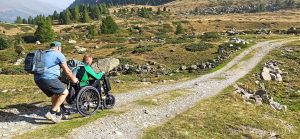Walking the Via Francigena during winter with snow? It’s an experience certainly worth undertaking, especially if you decide to go snowshoeing!
The route traverses a variety of landscapes, encompassing villages, countryside, plains, forests, and mountain regions. Typically, the Via Francigena is accessible on foot or by bicycle during the summer, spring, and autumn seasons, but sees less traffic in winter. Specifically, the mountainous sections that cross the Alps at the Great St. Bernard Pass and the Apennines at the Cisa Pass may appear challenging, yet they remain navigable even in winter with the assistance of snowshoes.
Here are our five tips for snowshoeing in snowy conditions:
1. Choosing the right snowshoes and poles
Snowshoes are devices attached beneath hiking boots to distribute weight over a larger surface area, enabling walking on snow without sinking into the snow. They feature metal crampons at the front to prevent slipping.
It is crucial for a successful and positive experience to select the right snowshoes. Snowshoes come in various sizes, and your choice will depend on your weight and height. The heavier the weight, the longer the snowshoe needs to be to effectively distribute the weight and prevent sinking into the snow. Therefore, it is also important to take into account the weight of your backpack and any additional equipment you will be carrying with you.
In addition to snowshoes, it is advisable to utilize poles to maintain balance and enhance stability and safety. Furthermore, poles offer support during ascents, enabling you to propel yourself using the strength of your arms, and facilitate a controlled descent, reducing the risk of slipping. For guidance on selecting snowshoes and poles, we suggest visiting the website of our technical partner, Ferrino Outdoor.
➡️ Click here to choose the best snowshoes for your needs
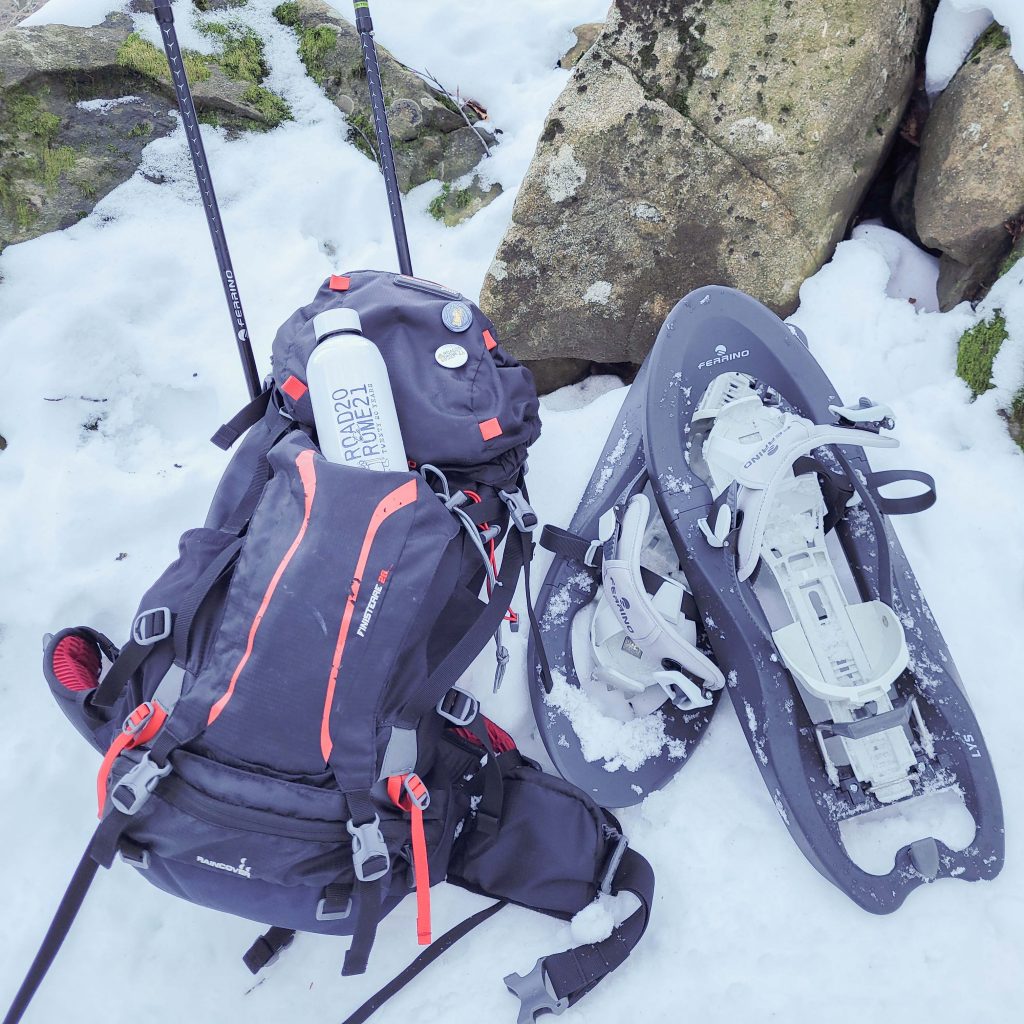
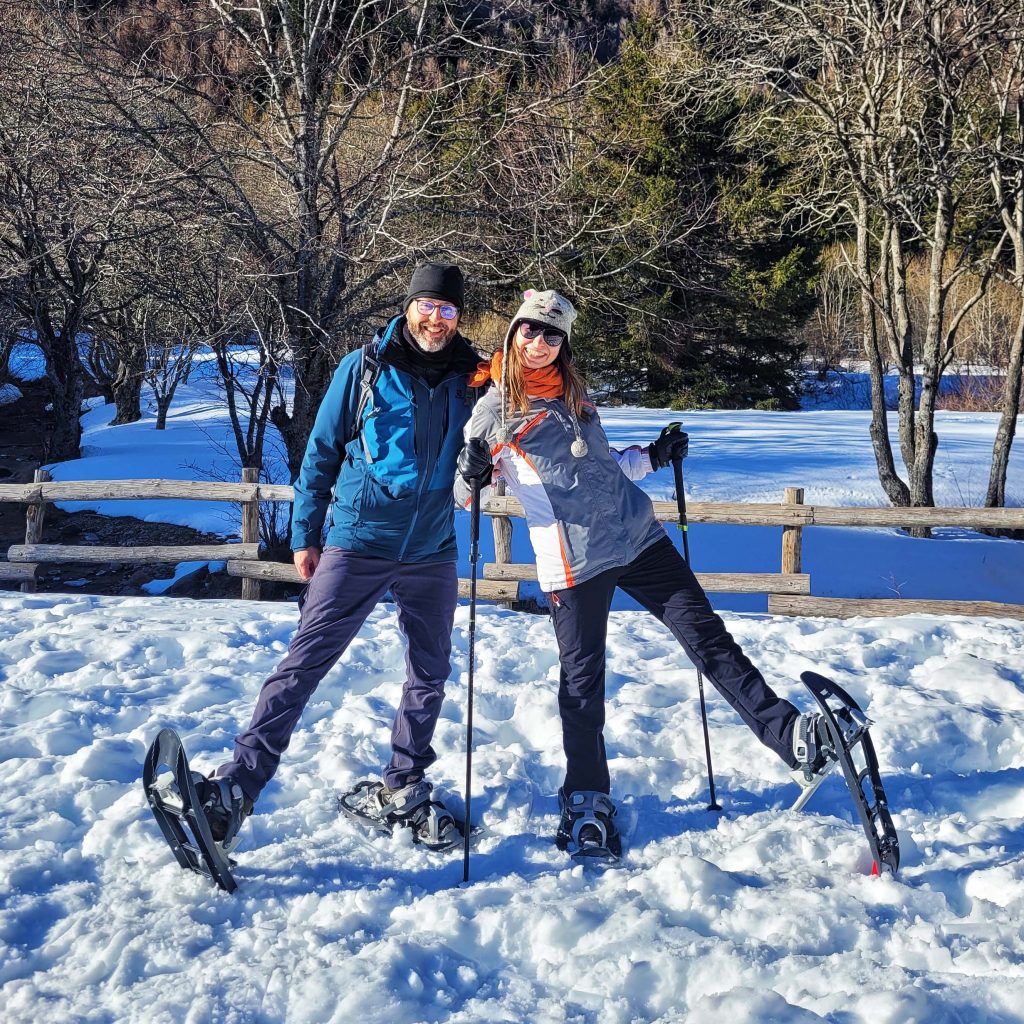
2. How to use snowshoes
Using snowshoes is exceedingly straightforward and suitable for hikers of all levels of experience, but it’s beneficial to be aware of a few tips to make walking more effortless. Firstly, it’s important to note that left and right snowshoes are not identical; to differentiate between them, simply examine the buckles on the straps or ankle straps. The buckles should always face outward to prevent interference with each other while walking.
Snowshoes feature pivoting bindings at the heel, which can be either clipped or unclipped from the base of the snowshoe. When unclipped, the heel lifts during each step, leaving the base of the snowshoe resting on the ground; when locked, the entire foot lifts along with the base of the snowshoe. On level ground and uphill terrain, it’s advisable to keep the snowshoe bindings unlocked to allow for natural foot movement, facilitating easier walking and reducing fatigue. Conversely, when walking downhill, it’s recommended to lock the pivoting bindings using the special catch and proceed with moderately short strides, sinking the heel into the snow while keeping the tip of the snowshoe elevated. When encountering ridges, it’s advisable to keep the bindings locked to prevent the snowshoe from slipping.
➡️ Click here for tips on how to cross the Great St. Bernard Pass in winter

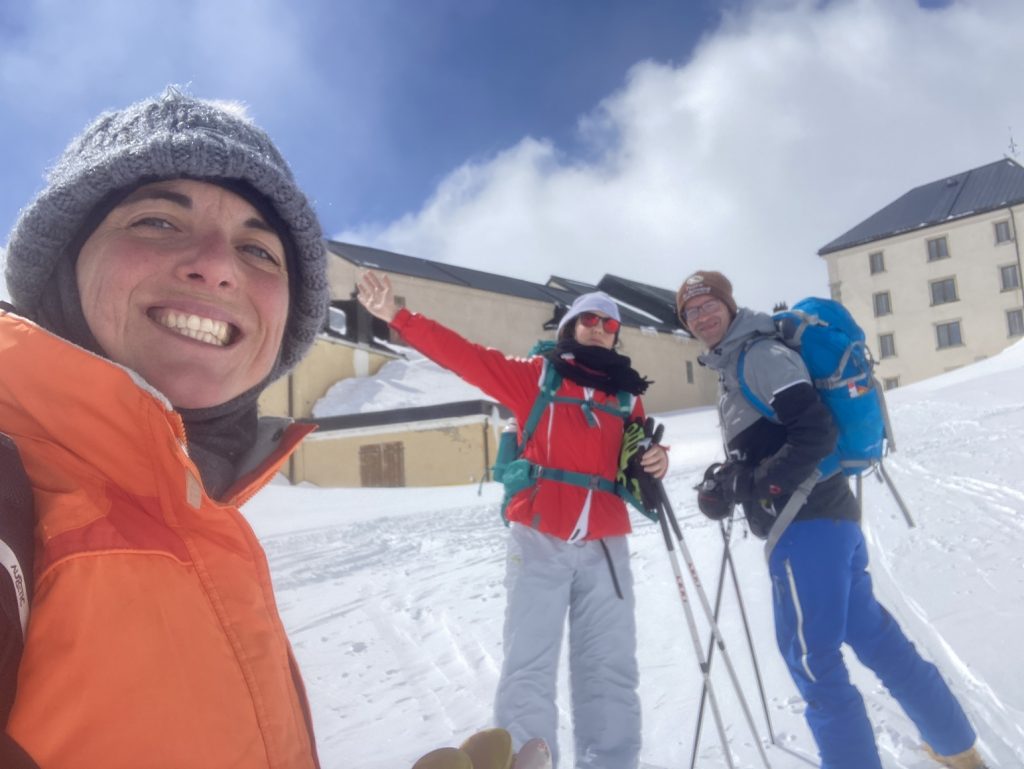
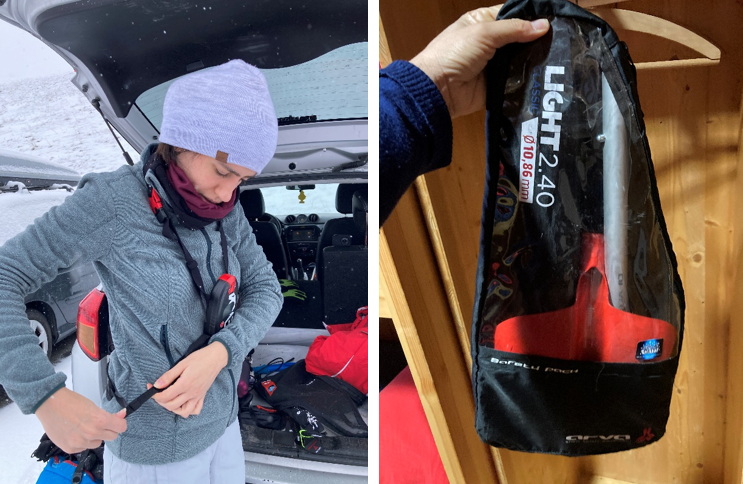
3. Choose appropriate winter clothing
Selecting the appropriate clothing is pivotal for a successful snowshoeing experience. Similar to any hike, particularly in winter, it’s important to adhere to the three-layer principle: a lightweight layer close to the body (like a breathable jersey made from technical fabric), insulation in the middle (such as a fleece), and a windproof outer layer. Technical fabrics are preferable as they offer breathability and are less likely to retain moisture, ensuring you stay dry throughout. Our partner, CAMCO Activewear, offers excellent options with 100% sustainable garments that blend extra-fine Merino wool with botanical fibers, utilizing a production process that recycles and reuses process fluids by over 99%. Additionally, gloves, headwear, neck warmers, and even sunglasses are essential, as snow reflects sunlight and can cause discomfort. Therefore, it’s crucial to equip yourself with sun protection regardless of the season.
Waterproof and windproof long trousers are necessary for the lower body, ideally not overly padded to avoid bulkiness and excessive warmth during activity. Additionally, it’s advisable to opt for technical and synthetic socks as they offer enhanced breathability and keep the feet both warm and dry.
Choosing the right footwear is also of paramount importance. Winter hiking boots are ideal for snowshoeing, as they feature a high cut that provides ankle protection, stability, and sturdy soles. The essential feature these boots must possess is waterproofing, guaranteeing dry feet even in the softest snow. For added protection, combining them with gaiters is recommended.
➡️ Click here for more tips on staying dry during an autumn or winter hike
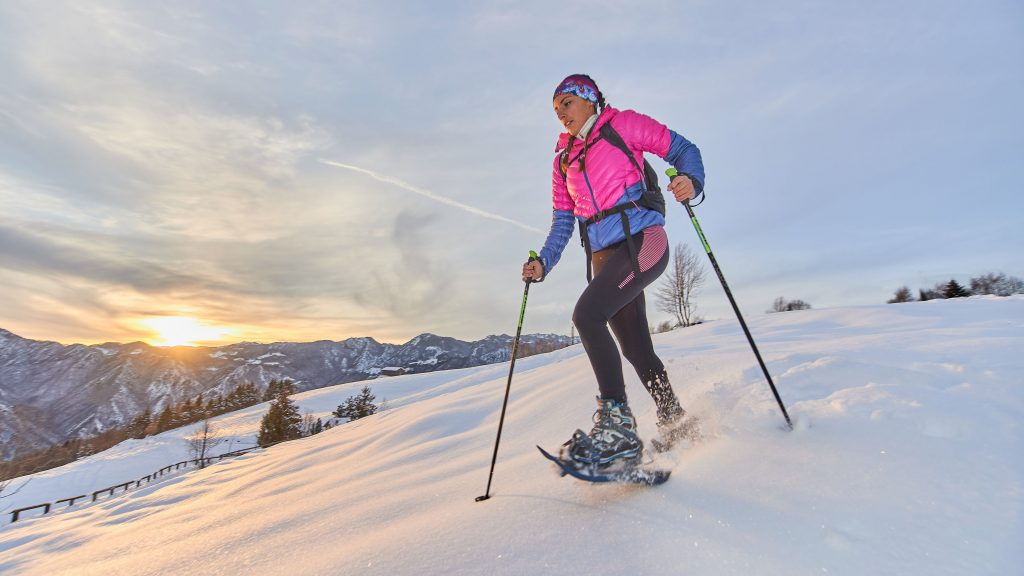
4. Select and study your itinerary beforehand
Like any mountain excursion, especially in winter, thorough preparation and route study are crucial for a safe experience. It’s essential to check the avalanche forecast and snow conditions before venturing out. When trekking on fresh snow, there’s a risk of avalanches and losing the trail as it’s not yet packed down. Therefore, it’s vital to exercise extreme caution and select routes suitable for your skill level and weather conditions. If possible, make sure to be accompanied by someone familiar with the area and to carry a GPS at all times. For following GPS tracks, we recommend using the AllTrails App.
5. Restoring your energy
It’s crucial to bring along enough water and snacks like chocolate and dried fruit while snowshoeing, as it can be physically demanding. The cold weather often leads to increased calorie expenditure, necessitating regular refreshment. Additionally, during winter hikes, the body’s dehydration rate may be higher due to unnoticed perspiration. Hence, we recommend carrying at least 1.5 liters of water and a snack to replenish energy during breaks.
Snowshoeing is an intense and strenuous activity that should not be underestimated. With proper care, it will allow you to enjoy unparalleled sceneries and views that are guaranteed to leave you breathless!










